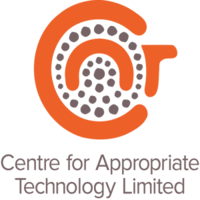Lama Lama, Queensland
Port Stewart water supply projectOverview
The Lama Lama people in Cape York have been struggling with water issues for nearly a decade, but needed detailed designs and cost estimates to source funding for new infrastructure.
Since the original water intake was destroyed by a cyclone in 2006, the community has been using a diesel pump to extract water from the Port Stewart River. Each year in the dry season, when water levels fall below the bed sand, an improvised pond is excavated in the river bed to enable them to continue pumping water. The improvised arrangements are prone to contamination and present risks to the safety and reliability of the supply.
Andre and Gavin Bassani, Operations Manager, Yintingga Aboriginal Corporation (YAC) decided they were frustrated with people visiting the site and writing reports with no result. Andre approached EWB Connect for assistance and Arup, who is one of the founding members of EWB Connect, agreed to provide specialist water engineering services and work with CAT and the local community to design a robust, sustainable, fully costed long term solution.
The final design will comprise a new non-vertical bore intake abstracting water from below the bed sands of the Port Stewart river (utilising solar powered and submersible bore pumps with a back-up diesel generator), a low maintenance aeration filtration system to remove the high iron concentrations and interconnections with the existing elevated reservoirs and distribution system.

Lama Lama Port Stewart water supply
Learnings
The design of the new water supply infrastructure was led by Sam Koci, Senior Water Engineer, Arup, who specialises in water infrastructure and design and management for remote communities.
The strong, long term relationship between CAT and Arup enabled a flexible approach throughout the project. While the initial scope was limited to the design of a new intake, due to project delays associated with securing funding for construction, Arup offered to provide additional services to identify and design a suitable water treatment (iron removal) system. This work is led by Priyani Madan, Water Engineer, from the Melbourne office.
In reviewing treatment options, Priyani sought advice from expert engineers at Arup. She also did her own research and consulted with other remote Indigenous community water supply operators to find a preferred solution that was appropriate to the context and within the technical and financial capacity of the YAC to operate and maintain.
“Finding an appropriate technology was my biggest challenge. It’s astounding this small project has taught me how different engineering and appropriate technology engineering are. They have similar principles and technologies, but appropriate technology has so many more constraints and so much more to think about and that is something I will take away from this experience.”
The preferred water treatment option is an innovative aeration filtration system designed to remove the high iron concentrations from the water. It requires no power or chemicals and very limited operation and maintenance. A similar system is utilised in the nearby Wujal Wujal community and is understood to be very effective.
From the community liaison side, Andre says the project reinforced the need to treat pro bono projects like normal projects – to be professional, have appropriate processes in place and establish clear boundaries around the company’s involvement.
“We need to act like a client and they need act like a service provider,” he says. “This keeps managers and decision makers happy as they can see there’s no scope creep and we need very clear boundaries with opportunities for extension if the company is interested.”
Impact
The design and cost estimates provided by Arup have enabled CfAT to apply for funding and they are now in the final stages of sourcing funds for construction of the new water supply infrastructure.
Gavin says “We now have a fully engineered design and are chasing funding to get it built. When it’s installed, we will have something everyone else in Australia takes for granted, a reliable water supply. Once we have that, we can pursue economic opportunities like improving our safari camp.”
Reflecting on her involvement, Priyani says, “Being exposed to pro bono projects is really interesting because you learn about different communities. I’ve gained technical knowledge, got really good experience in project management from being given responsibility for part of the project and learnt a lot about appropriate technology. Putting engineering theory into practice in this sort of situation makes you much more creative in the way you think and helps with your day to day work.”
“Projects like this make me more passionate about working because I feel it’s really making a difference. I think it’s really cool to spend my time at work on something that is really making a change,” she adds.
Andre, who has worked with the Lama Lama community for over 10 years, says it is a great outcome. “Without EWB Connect, none of this would have been solved. Our role at CfAT is to help facilitate solutions to technical challenges Aboriginal and Torres Strait Islander people face to exercising their right live on country and look after the land. This EWB Connect project is a great example of catalytic intervention by an engineering company that will facilitate a positive social outcome.”
Partners




